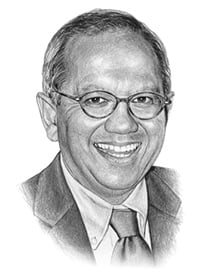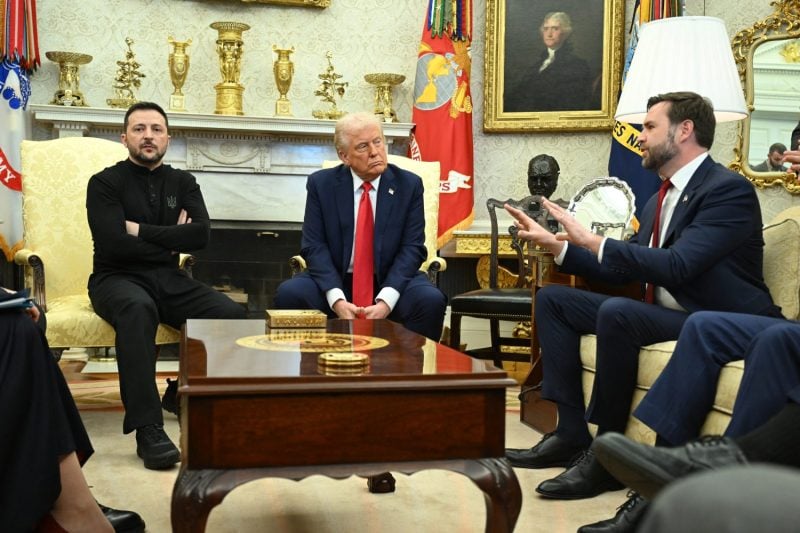What Is the Risk of a Conflict Spiral Between India and Pakistan?

What Is the Risk of a Conflict Spiral Between India and Pakistan?
Officials in New Delhi and Islamabad have remained sanguine, but there is still reason to fear extreme escalation.
Indian Border Security Force personnel stand guard at the India-Pakistan Wagah border crossing, near Amritsar, on Feb. 26, 2019. Narinder Nanu/AFP via Getty Images
The militant attack in Indian-administered Kashmir that killed 26 tourists last month was the first major terrorist incident in the region since February 2019, when a suicide bombing attributed to the Pakistan-based group Jaish-e-Mohammed struck an Indian police convoy in Pulwama.
Shortly after the recent attack in Pahalgam, Indian Prime Minister Narendra Modi pledged to pursue the militants and their backers to the “ends of the earth.” Early Wednesday morning local time, India launched a barrage of missiles into Pakistani-administered Kashmir and the neighboring province on Punjab. Pakistan has resorted to artillery fire against Indian positions along the Line of Control, the de facto international border in disputed Kashmir.
The militant attack in Indian-administered Kashmir that killed 26 tourists last month was the first major terrorist incident in the region since February 2019, when a suicide bombing attributed to the Pakistan-based group Jaish-e-Mohammed struck an Indian police convoy in Pulwama.
Shortly after the recent attack in Pahalgam, Indian Prime Minister Narendra Modi pledged to pursue the militants and their backers to the “ends of the earth.” Early Wednesday morning local time, India launched a barrage of missiles into Pakistani-administered Kashmir and the neighboring province on Punjab. Pakistan has resorted to artillery fire against Indian positions along the Line of Control, the de facto international border in disputed Kashmir.
There is little question that Pakistan will retaliate against this initial Indian missile strike, driven by several factors. First, the Pakistani military, which has long dominated the country’s politics, cannot let an attack on its own territory from its principal adversary go unanswered. Second, though Pakistan has an elected government, Prime Minister Shehbaz Sharif is beholden to Pakistan Army chief Asim Munir.
The military leader is known to be bellicose toward India, as evinced in a speech he gave barely a week before the Pahalgam attack. Echoing the sentiments of Pakistan’s founder, Muhammad Ali Jinnah, Munir invoked the “two-nation theory”—the idea that Hindus and Muslims are two distinct, primordial nations and cannot coexist.
Will Pakistan’s likely retaliation send the countries hurtling into an escalatory spiral culminating in the use of nuclear weapons? This fear has long haunted strategists abroad, though both Indian and Pakistani officials have remained sanguine about such risks. There are reasons to remain optimistic that neither side will escalate toward a nuclear exchange. Neither India nor Pakistan wants to be labeled as the first violator of the post-Hiroshima nuclear taboo. Further, the use of nuclear weapons would lead to untold devastation in both countries.
Despite these seemingly rational arguments, there is also some reason to fear a conflict spiral. First, Pakistan’s nuclear doctrine explicitly eschews a no-first-use policy. If faced with what it deems to be an existential threat, Islamabad reserves the right to use nuclear weapons. Second, Pakistan has short-range tactical nuclear weapons that are forward-deployed and presumably intended to blunt a significant Indian conventional incursion.
Meanwhile, though India long upheld a no-first-use doctrine, it has in recent years informally dialed back its stance. Much ambiguity still surrounds India’s operational doctrine, even though some scholars have argued that India is seeking actual first-strike capabilities.
The United States has played a key role in containing and defusing past India-Pakistan crises, including those that took place after the two countries crossed the nuclear threshold in 1998. This time, however, Washington is focused on a host of other domestic and foreign-policy issues; it may not be willing or able to devote time and resources to prevent further escalation.
Since President Donald Trump took office in January, the United States has not had an ambassador in New Delhi, and no assistant secretary of state for South and Central Asia has been confirmed. As a result, it has mostly fallen to Secretary of State Marco Rubio—now also the interim national security advisor—to try to get both parties to exercise appropriate restraint. Whether Rubio’s call is heeded in both capitals remains an open question.
In an unprecedented move, Iranian Foreign Minister Abbas Araghchi visited Pakistan this week to defuse tensions. But his attempt will most likely prove quixotic: Despite Iran’s long-standing ties to both India and Pakistan, it lacks the diplomatic or political clout to serve as a viable interlocutor.
Under these circumstances, if Pakistan’s retaliatory actions prove to be reckless and inflict substantial damage on Indian military or civilian entities, an escalatory spiral could ensue. India, grappling with an aggrieved public, will feel that it has little choice but to pursue further retaliation. Such tit-for-tat responses could result in what security scholars call inadvertent escalation—a specter that long haunted Western Europe as it confronted the Soviet threat and now looms over South Asia.
Sumit Ganguly is a columnist at Foreign Policy and senior fellow at Stanford University’s Hoover Institution, where he directs the Huntington Program on Strengthening U.S.-India Relations.
More from Foreign Policy
-

Eight people dressed in camouflage military combat uniforms wade across a river, the water up to their waists. The soldiers carry large backpacks along with their rifles. Snowcapped mountains and a thick forest of evergreen trees loom in the distance. Get Ready for the Aleutian Island Crisis
As conflict heats up in the Arctic, foreign adversaries eye Alaskan territory.
-

U.S. President Donald Trump speaks to reporters before boarding Air Force One at Morristown Municipal Airport in Morristown, New Jersey, on April 27. Trump’s First 100 Days Reveal a ‘Strongman’s’ Unprecedented Weakness
No U.S. president has ever surrendered global power so quickly.
-

An elderly man and woman sit on the ground, the man on his knees as he sorts through something on the ground. Behind him are a rusted cart and bicycle in front of a paint-smeared concrete wall and a battered corrugated metal sign with the words USAID: From the American people” on it. What Trump’s New Budget Says About U.S. Foreign Policy
The president wants to significantly pull back on many of America’s traditional global engagements while spending more on the border and defense.
-

U.S. President Donald Trump listens to Secretary of State Marco Rubio at a cabinet meeting in the White House in Washington, D.C. Rubio’s Reorganization Plan Is a Wrecking Ball
The State Department revamp goes far beyond streamlining—it will devalue human rights and strip away critical expertise.











Join the Conversation
Commenting on this and other recent articles is just one benefit of a Foreign Policy subscription.
Already a subscriber?
.
Subscribe
Subscribe
View Comments
Join the Conversation
Join the conversation on this and other recent Foreign Policy articles when you subscribe now.
Subscribe
Subscribe
Not your account?
View Comments
Join the Conversation
Please follow our comment guidelines, stay on topic, and be civil, courteous, and respectful of others’ beliefs.
Change your username |
Log out
Change your username:
CANCEL
Confirm your username to get started.
The default username below has been generated using the first name and last initial on your FP subscriber account. Usernames may be updated at any time and must not contain inappropriate or offensive language.